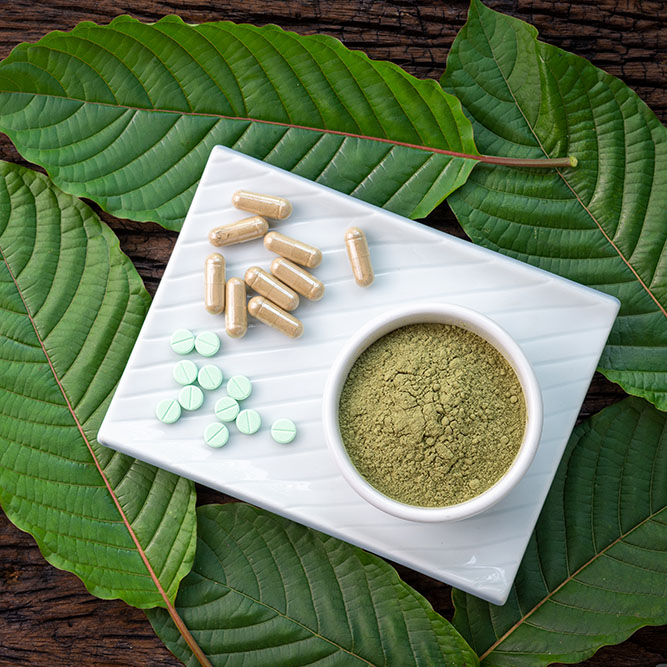Understanding the kratom tree and its origins are important for most customers. It’s an herbal plant matter that you consume, and every conscientious shopper wants to know what they’re ingesting. Kratom products are no different. The fact that kratom has a psychoactive effect should not supersede one’s thirst for knowledge or the well-being of your health.
But to a dilettante on the subject, it can be a daunting task. Different kratom vendors are sprouting up online all the time, offering various types of kratom that are not marketed by some of the other companies. This phenomenon is evident through a quick online search for kratom products on the internet. You’ll find several different varieties to choose from—with more being discovered as time goes by. But the truth remains that there is only one type of kratom tree in nature: and that is Mitragyna speciosa. So what differentiates each type of kratom on the market from all the others?
Well, to get to the bottom of this quandary, we’ll have to untangle the numerous myths about kratom that are prevalently found on the internet from the hard-cold facts that are present in reality.
The Multiple Varieties of Kratom
Every single kratom product that you find on the market comes from a single source: the Mitragyna speciosa tree—more accurately, its leaf. But whenever you go to purchase kratom from a vendor or supplier, you’ll find an overwhelming list of kratom products available in stock.
Primarily, the kratom varieties that you’ll come across are going to be labeled after the colors of each kratom type that’s provided. In those instances, the particular color included in the product’s name will match the color of the ground up kratom in the package. And there are quite a few different varieties at your disposal. You can choose from a long list that includes varieties of kratom in the green, white, red, yellow, or even black shades of color.
But if a kratom leaf is naturally green, then common sense would tell you that ground-up kratom leaves should be green as well. So, where are all the other colors originating from?
That particular question has created a bunch of misinformation that has plagued the industry in the past few years. If you look through certain vendor’s websites for the answer, you’ll see a bunch of companies quite adamantly claim that it has to do with the color of the veins in the leaves. But that response is a misguided notion from ill-advised kratom operators because the veins of a kratom leaf only come in three distinct colors: white, red, and green.
White-Veined Kratom
White-veined kratom is the color of the leaf’s vein during its development cycle. Technically, it’s a very light shade of green. This occurs because of the chlorophyll content is still in the process of reaching its full potential. The more chlorophyll that’s found inside the stem and leaf, then a darker hue of green will become more apparent as the leaf ages.
Green-Veined Kratom
This is the next step in the life cycle of the leaf. As the leaf begins to mature, the veins provide evidence that the chlorophyll inside the leaf is starting to peak, producing the classic green color that mimics the flesh of the kratom leaf itself. It’s during this period of time that the leaf is taking in the most energy it can possibly acquire from the sunlight.
Red-Veined Kratom
As the plant hits full maturity, a kratom leaf’s vein will begin to darken to an amber color. This reddish hue provides the kratom farmers with a tell-tale sign that the leaf is ready for harvest. At this stage of growth, pigments called anthocyanins are becoming more abundant throughout the leaf and help protect the plant from harsh UV rays.
The Color of a Kratom Leaf’s Flesh
Now, since we know about the coloring found in kratom’s veins and stems, let’s look at the lamina of the leaf itself. That lush green color of a kratom leaf you see in pictures is also the result of a pigment called chlorophyll. That molecule captures sunlight and transfers the energy into fuel for the kratom tree through a process called photosynthesis.
Chlorophyll absorbs mostly the frequencies of light in the red and blue wavelengths, while it does poorly with the green portion of the electromagnetic spectrum, reflecting it away from the leaf. And that’s why the majority of kratom leaves appear green when you look at them.
But like other leaves, additional pigments can change the color of the leaf. Kratom leaves also contain carotenoid pigments such as carotene and xanthophyll, which can create yellow and orange hues in the plant. And there are even some instances of a kratom leaf turning the color red, too.
When this reddening of the leaf occurs, it’s because of anthocyanins (a pigment not found in all plants) are protecting the kratom’s leaves from the stress of photoinhibition, which happens whenever the leaf is exposed to excessive sunlight.
The Color of Kratom Varieties
Seeing that we discussed how the primary color of a kratom leaf is green, let’s get back to figuring out how these other varieties of kratom even exist. Now, we know that white and red veins can be found in the leaf, but it’s not like the stems and veins have that great of an impact on the color of the product, especially when you take into consideration that suppliers usually remove the stems and veins before crushing the leaf.
And even if you were to believe the propaganda that the veins somehow mysteriously alter the product’s color, then how would that explain other varieties such as yellow, brown, or black? A quick answer to that question: it doesn’t. And that’s because the color variations come from something different altogether.
Kratom Varieties Are the Result of Manufacturing Techniques
Instead of the leaf’s flesh, vein, or stem having anything to do with the color of the product you’re purchasing, it’s actually the way the Indonesian suppliers are processing their kratom. And the best way to explain it would be to compare kratom to the traditional teas that you can purchase in a store.
If you go into any grocery market or health food store, stocked on the shelves, you’ll find options like black, green, white, yellow, or oolong teas for sale. But none of those teas are created from a different group of plants. And the products don’t come from different versions of a tea leaf, either. Every single type of tea available for you to purchase comes from a specific evergreen shrub known as Camellia sinensis—the same as all kratom teas come from a specific evergreen tree: Mitragynine speciosa.
The fermentation and curing processes of a traditional tea leaf create the illusion that you’re buying products from different types of plants. But all those selections of teas found inside a grocery store carry the exact same leaf in the container. And that aforementioned fact is no different from the various kratom products for sale online.
And that’s the reason why every variety of kratom tea coincides with the colors of traditional teas that already exist. The kratom suppliers are mimicking the fermentation and drying processes that have been around for ages.
Different Kratom Varieties Provide Noteworthy Effects
Each variety of kratom provides different therapeutic effects for the user. And depending on how your brain chemistry and biological makeup is hardwired, you’ll find that varieties that undergo a particular style of processing will similarly affect you the same, for the most part. Now, there are anomalies for kratom products on the market because the genetic makeup of a plant’s material can change significantly from ecological conditions. But these deviations are not the norm.
So if you discover a variety of kratom that suits your taste and has the overall desired effects that you’re looking for, it’s safe to say that identical varieties will affect you in a quite similar fashion. So experiment with all the different types of kratom on the market and find a color that works for you. Who knows? You might like them all. And there’s absolutely nothing wrong with that. I know that I do.
But, like me, you’ll probably discover a favorite that you always need to keep stocked in your cabinet. And whenever you find out which variety is your go-to kratom product—if you haven’t already, then drop us a comment below and tell us about it. Kratom Geek would be interested to learn about the tastes of each one of our audience members. Always remember: we’re all family around here.







Very succinct report. Been using Kratom for over 8 years recreationally (on the weekends) and I can concur completely with this piece.
Best article I’ve ever come across for a novice to read